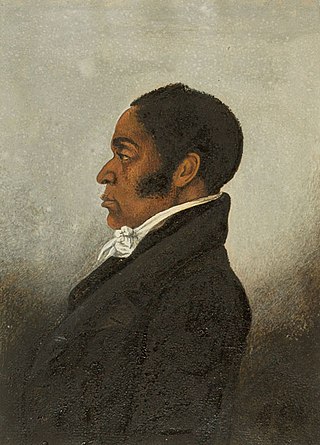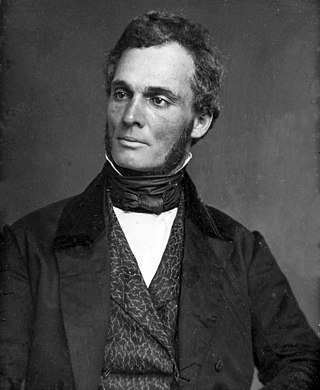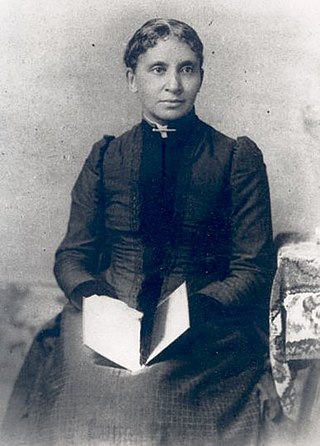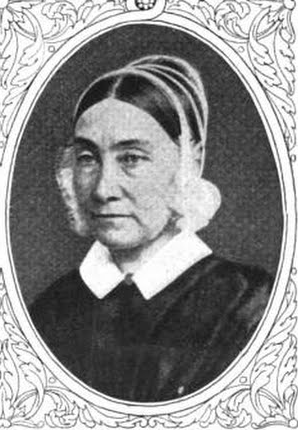
The American Anti-Slavery Society (AASS) was an abolitionist society in the United States. AASS formed in 1833 in response to the nullification crisis and the failures of existing anti-slavery organizations, such as the American Colonization Society. AASS formally dissolved in 1870.

James Forten was an American abolitionist and businessman in Philadelphia, Pennsylvania. A free-born African American, he became a sailmaker after the American Revolutionary War. Following an apprenticeship, he became the foreman and bought the sail loft when his boss retired. Based on equipment he himself had developed, he established a highly profitable business. It was located on the busy waterfront of the Delaware River, in an area now called Penn's Landing.

Robert Purvis was an American abolitionist in the United States. He was born in Charleston, South Carolina, and was likely educated at Amherst Academy, a secondary school in Amherst, Massachusetts. He spent most of his life in Philadelphia, Pennsylvania. In 1833 he helped found the American Anti-Slavery Society and the Library Company of Colored People. From 1845 to 1850 he served as president of the Pennsylvania Anti-Slavery Society and also traveled to Britain to gain support for the movement.

Charlotte Louise Bridges Grimké was an African-American anti-slavery activist, poet, and educator. She grew up in a prominent abolitionist family in Philadelphia. She taught school for years, including during the Civil War, to freedmen in South Carolina. Later in life, she married Francis James Grimké, a Presbyterian minister who led a major church in Washington, DC, for decades. He was a nephew of the abolitionist Grimké sisters and was active in civil rights.

Sarah Parker Remond was an American lecturer, activist and abolitionist campaigner.

The Religious Society of Friends, better known as the Quakers, played a major role in the abolition movement against slavery in both the United Kingdom and in the United States. Quakers were among the first white people to denounce slavery in the American colonies and Europe, and the Society of Friends became the first organization to take a collective stand against both slavery and the slave trade, later spearheading the international and ecumenical campaigns against slavery.
The first Anti-Slavery Convention of American Women was held in New York City on May 9–12, 1837, to discuss the American abolition movement. This gathering represented the first time that women from such a broad geographic area met with the common purpose of promoting the anti-slavery cause among women, and it also was likely the first major convention where women discussed women's rights. Some prominent women went on to be vocal members of the Women's Suffrage Movement, including Lucretia Mott, the Grimké sisters, and Lydia Maria Child. After the first convention in 1837, there were also conventions in 1838 and 1839

Sarah Mapps Douglass was an American educator, abolitionist, writer, and public lecturer. Her painted images on her written letters may be the first or earliest surviving examples of signed paintings by an African American woman. These paintings are contained within the Cassey Dickerson Album, a rare collection of 19th-century friendship letters between a group of women.
Margaretta Forten was an African-American suffragist and abolitionist.

In the United States, abolitionism, the movement that sought to end slavery in the country, was active from the colonial era until the American Civil War, the end of which brought about the abolition of American slavery, except as punishment for a crime, through the Thirteenth Amendment to the United States Constitution.

Harriet Forten Purvis was an African-American abolitionist and first generation suffragist. With her mother and sisters, she formed the first biracial women's abolitionist group, the Philadelphia Female Anti-Slavery Society. She hosted anti-slavery events at her home and with her husband Robert Purvis ran an Underground Railroad station. Robert and Harriet also founded the Gilbert Lyceum. She fought against segregation and for the right for blacks to vote after the Civil War.

Amy Hester "Hetty" Reckless was a runaway slave who became part of the American abolitionist movement. She campaigned against slavery and was part of the Underground Railroad, operating a Philadelphia safe house. She fought against prostitution and vice, working toward improving education and skills for the black community. Through efforts including operating a women's shelter, supporting Sunday Schools and attending conferences, she became a leader in the abolitionist community. After her former enslaver's death, she returned to New Jersey and continued working to assist escaping slaves throughout the Civil War.
Grace Bustill Douglass was an African-American abolitionist and women's rights advocate. Her family was one of the first prominent free black families in the United States. Her family's history is one of the best documented for a black family during this period, dating from 1732 until 1925.

The history of African Americans or Black Philadelphians in the city of Philadelphia, Pennsylvania has been documented in various sources. People of African descent are currently the largest ethnic group in Philadelphia. Estimates in 2010 by the U.S. Census Bureau documented the total number of people living in Philadelphia who identified as Black or African American at 644,287, or 42.2% of the city's total population.

Sarah Pugh was an American abolitionist, activist, suffragist, and teacher. She was involved with promoting the free produce movement, including a boycott on sugar produced by slave labor. She was a leader of the Philadelphia Female Anti-Slavery Society from its earliest days in 1835 until it closed in 1870. Along with Lucretia Mott, Pugh was one of the delegates to the World Anti-Slavery Convention in London who were denied their seats because they were women.
The Fall River Female Anti-Slavery Society was an abolitionist group in Fall River, Massachusetts, formed in 1835. It was the second female anti-slavery society in the city. One of its founding members was Elizabeth Buffum Chace (1806–1899).
Sarah Louisa Forten Purvis (1814–1884) was an American poet and abolitionist from Philadelphia, Pennsylvania. She co-founded The Philadelphia Female Anti-Slavery Society and contributed many poems to the anti-slavery newspaper The Liberator.
Thankful Southwick was an affluent Quaker abolitionist and women's rights activist in Boston, Massachusetts. Thankful was lifelong abolitionist who joined the Boston Female Anti-Slavery Society in 1835 with her three daughters. She was present at both the 1835 Boston Mob and the Abolition Riot of 1836. During the 1840 schism in the Boston Female Anti-Slavery Society, Thankful sided with the Westons, Chapmans, Childs, Sergeants, and other radical Garrisonians to reestablish the Boston Female Anti-Slavery Society. She also later joined the New England Non Resistance Society.

Charlotte Vandine Forten (1785–1884) was an American abolitionist and matriarch of the Philadelphia Forten family.
The Concord Female Anti-Slavery Society was a female abolitionist organisation in Concord, Massachusetts, in the mid 19th century. This society was a significant influence on Henry David Thoreau, Ralph Waldo Emerson, and Louisa May Alcott.















